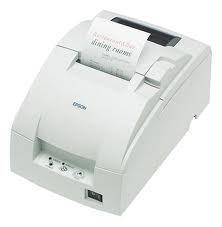Impact Printers
An impact printer is one that depends on a forceful impact to transfer ink to a material such as a t-shirt, sign, or sheet of paper. Impact printers differ from digital, inkjet, and inkless printers as it actually collides with the material itself. Typewriters, industrial printers, and daisy wheel printers are all forms of impact printers. Impact printers have many uses although they have generally been considered obsolete since the introduction of more modern printing techniques.
How Impact Printers Work
In a typical impact printer, a mesh, cloth, or ridged platform is filled with ink in a pattern that is inversely proportional to the intended image. Electromechanical forces then raise the platform and forcefully drop it on top of a material such as wood, corrugated plastic, cloth, cardboard, or paper. UV light, heat, or air usually dries the ink immediately after production to prevent the image from coming off of the material or staining the handler’s skin.
Applications
Although impact printers are considered obsolete and more modern printing techniques have replaced them, they are still used for a wide variety of applications. Impact printers are often used to create political campaign signs, billboards, t-shirts, banners, and commercial advertisements. They are also used in the form of typewriters to produce written text for books, advertisements, pamphlets, fliers, and other forms of literature.
Advantages
Impact printers can produce large amounts of product with less ink and at a faster rate than other types of printers. They also use less electricity than other types of printers and can be manually adjusted to change the printer’s impact rate and angle as well as turn the vacuum on or off.
Disadvantages
Impact printers are very large and heavy, making them difficult to relocate. They are also very loud, making them a nuisance for certain environments. Also, impact printers do not produce the good quality that more modern printers do and pose a risk of injuring the operator if his/her hand gets trapped in the platform.


Comments - No Responses to “Impact Printers”
Sorry but comments are closed at this time.